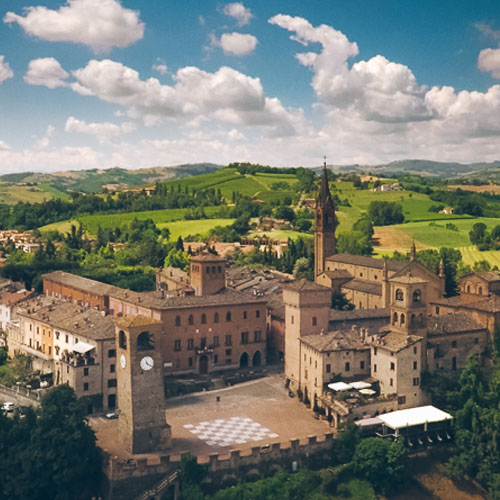Levizzano Castle
Located in the wonderful hilly landscape of the homonymous hamlet, Levizzano Castle is a fortification erected as a defensive bulwark against the Hungarians and subsequently granted by the bishop of Modena to the Marquis Bonifacio of Tuscany, father of the famous Matilde of Canossa.
The last major restoration works, completed in 2007, have made it possible to recover a building of enormous historical and cultural value, making it perfectly functional for exhibitions, cultural activities, conferences, and events.
Inside the city walls, there is the Matildica Tower, which serves as a keep and a chapel now deconsecrated. Starting from the 12th century, the complex was restored and enlarged by erecting the feudal palace, home of the Lord. Square in the plan, with a brick and stone mixed wall structure, it is crowned by a protruding apparatus, perhaps from the fifteenth century or from the second half of the fourteenth century, made up of small corbels, which support Ghibelline-shaped merlons, joined together at the top by arches, which they have a four-pitched roof.
The so-called Stanze dei Vescovi, on the ground floor, whose ceiling has noteworthy frescoes, dating back to the 16th century. Coats of arms of the family adorn the coffered ceiling, together with friezes and allegorical figures; in the upper part of the walls, inside panels, there are frescoes of a chivalrous environment, sketches of a loving topic, hunting moments, but also rural landscapes with small villages, castles, which recall the surrounding places.
ROSSO GRASPA – Museum of wine and rural society
In April 2019, inside the Castle, the ROSSO GRASPA Museum of Wine and Rural Society was opened to the public. Inside the museum, there are numerous testimonies of the life of the fields: agricultural tools, tools for woodworking, tools for processing grapes, and extraordinary photographic evidence illustrate in a pleasant and captivating way the social dynamics and practices of the agricultural society.


